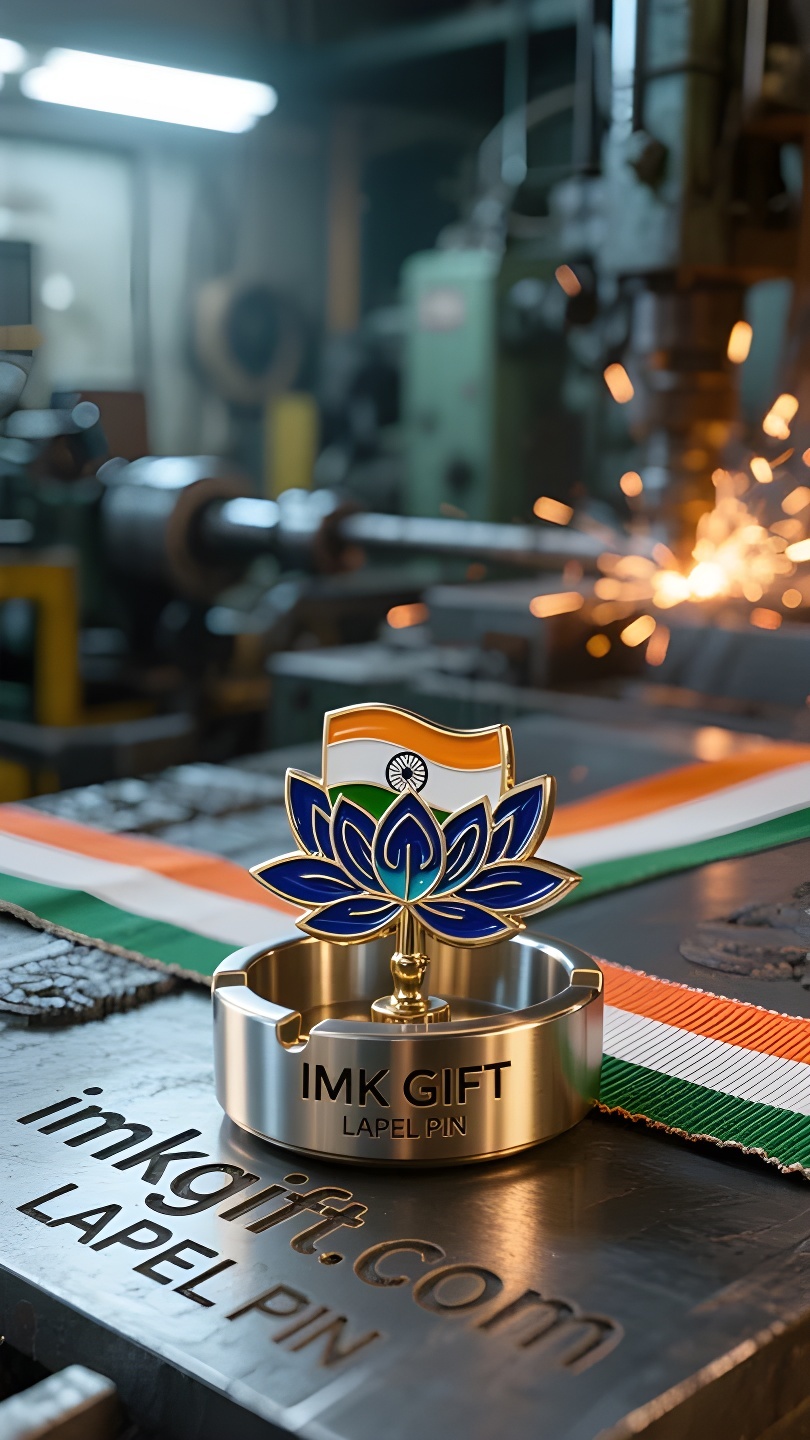in983-र-ख-स-ख-लत-र-ष-ट-र-य-आत-म-कमल-क-र-ख-म-आध-य-त-म-क-न-र-व-ण
▼
भारतीय ध्वज के नारंगी, सफेद और हरे रंगों के नीचे पुनर्जन्म की एक कहानी छिपी हुई है – कमल के आकार की ऐशट्रे, जिसे अनगिनत लोगों ने नजरअंदाज कर दिया है, चुपचाप देश के जीवन के सबसे गहन दर्शन को बता रही है। राष्ट्रीय ध्वज के मध्य में स्थित नीला धर्म चक्र “निरंतर परिवर्तन” के सत्य को दर्शाता है, तथा कमल की ऐशट्रे की 24 पंखुड़ियां वास्तविकता में प्रक्षेपित धर्म चक्र की तीलियों के प्रतिबिम्ब के समान हैं। जब राख कमल के हृदय में गिरती है, तो राख अंत नहीं होती, बल्कि नए जीवन के लिए उपजाऊ मिट्टी होती है। जिस प्रकार भारत के स्वतंत्रता संग्राम का रक्त, आग और धुआं अंततः 15 अगस्त 1947 को भोर से पहले चिंगारी में बदल गया, उसी प्रकार जब धुआं छंटा तो पवित्र कमल पहले ही जमीन से फूट चुका था। इस ऐशट्रे का चाप आकार पुनर्जन्म के ज्ञान को दर्शाता है, और धातु की बनावट आग से तपने के बाद की कठोरता को दर्शाती है। जिन राख को “बेकार अवशेष” माना जाता था, उनका कमल के आसन में पवित्र रूपांतरण किया गया – ठीक वैसे ही जैसे कोलकाता की मलिन बस्तियों में सफाईकर्मियों के हाथ और मुम्बई की धारावी बस्ती में पुरानी वस्तुओं को बदलने वाली कार्यशालाएं, खंडहरों में हमेशा अद्भुत जीवंतता पैदा करती हैं। यह “विनाश ही सृजन है” के हिंदू सिद्धांत की आधुनिक व्याख्या है, और यह “पृथ्वी के साथ सामंजस्य” का अंतिम अभ्यास भी है, जिसका प्रतीक राष्ट्रीय ध्वज की हरी पट्टियाँ हैं। जब आप अपनी अंगुलियों से ऐशट्रे पर टैप करते हैं, तो धातु गंगा की ध्वनि की तरह कंपन करती है। यह हमें याद दिलाता है कि सच्ची महिमा अंधकार से बचने में नहीं, बल्कि धूल के हर कण को खिलने के लिए पोषक तत्वों में बदलने में निहित है। ठीक वैसे ही जैसे भारत ने, जिसने उपनिवेशवाद के उतार-चढ़ाव को अनुभव किया है, हमेशा कमल की मुद्रा में इतिहास की राख पर निर्वाण और पुनर्जन्म का महाकाव्य लिखा है।
Under the glow of the orange, white and green colors of the Indian flag, there is a parable about rebirth – the lotus-shaped ashtray, which has been ignored by countless people, is telling the most profound philosophy of life of this nation in a silent manner. The blue Dharma wheel in the center of the national flag rotates the truth of “perpetual change”, and the 24 petals of the lotus ashtray are just like the reflection of the Dharma wheel spokes projected in reality. When the ash falls on the heart of the lotus, the ashes are not the end, but become fertile soil for new life. Just as the blood and smoke of India’s independence struggle finally turned into sparks before dawn on August 15, 1947, the holy lotus has already broken through the ground where the smoke and dust have dissipated. The arc shape of this ashtray implies the wisdom of reincarnation, and the metal texture reflects the toughness after being tempered by the fierce fire. The ashes that were considered “useless residue” have completed a sacred transformation in the lotus seat – just like the hands of scavengers in the slums of Kolkata and the workshops for repurposing old items in the slums of Dharavi in Mumbai, which can always create amazing vitality in the ruins. This is a modern interpretation of the “destruction is creation” in Hinduism, and it is also the ultimate practice of “reconciliation with the earth” symbolized by the green stripes of the national flag. When the fingertips tap this ashtray, the metal trembles like the sound of the Ganges. It reminds us: the true glory is not to escape from the gray, but to make every grain of dust become the nutrient for blooming. Just like India, which has experienced the vicissitudes of colonialism, it has always written the epic of nirvana and rebirth in the ashes of history in the posture of a lotus.
在印度国旗的橙、白、绿三色辉映下,藏着一则关于重生的寓言——那尊被无数人忽略的莲花形烟灰缸,正以沉默的姿态讲述着这个民族最深邃的生命哲学。
国旗中央的蓝色法轮旋转着”变革永动”的真理,而莲花烟灰缸的24片花瓣,恰如法轮辐条投射在现实中的倒影。当烟灰飘落于莲花心蕊,灰烬非但不是终点,反而成为新生的沃土。正如印度独立斗争中的血火硝烟,终在1947年8月15日化为黎明前的星火,烟尘散尽处,圣洁的莲花已然破土而出。
这只烟灰缸的圆弧造型暗合着轮回的智慧,金属质地映照着烈火淬炼后的坚韧。那些被视作”无用残渣”的烟灰,在莲花座中完成神圣转化——就像加尔各答贫民窟里拾荒者的双手、孟买达拉维贫民区的旧物改造作坊,总能在废墟里创造出令人惊叹的生命力。这是印度教义中”毁灭即创造”的现代演绎,更是国旗绿色条纹象征的”与大地和解”的终极实践。
当指尖轻叩这尊烟灰缸,金属震颤如同恒河的潮音。它提醒着我们:真正的荣耀不在逃避灰暗,而在让每粒尘埃都成为绽放的养分。正如历经殖民沧桑的印度,始终以莲花之姿,在历史的烟灰中书写涅槃重生的史诗。
▼
Contact Us
📞 Tel: +0086-760-85286839
📧 Email: sales3@imkgift.com








